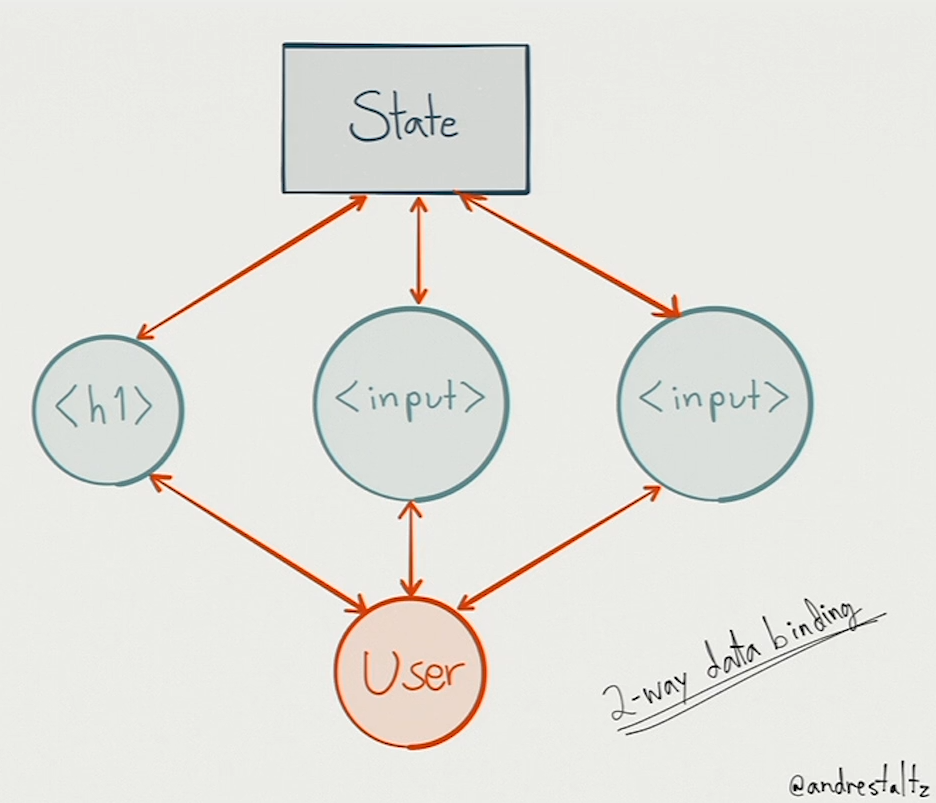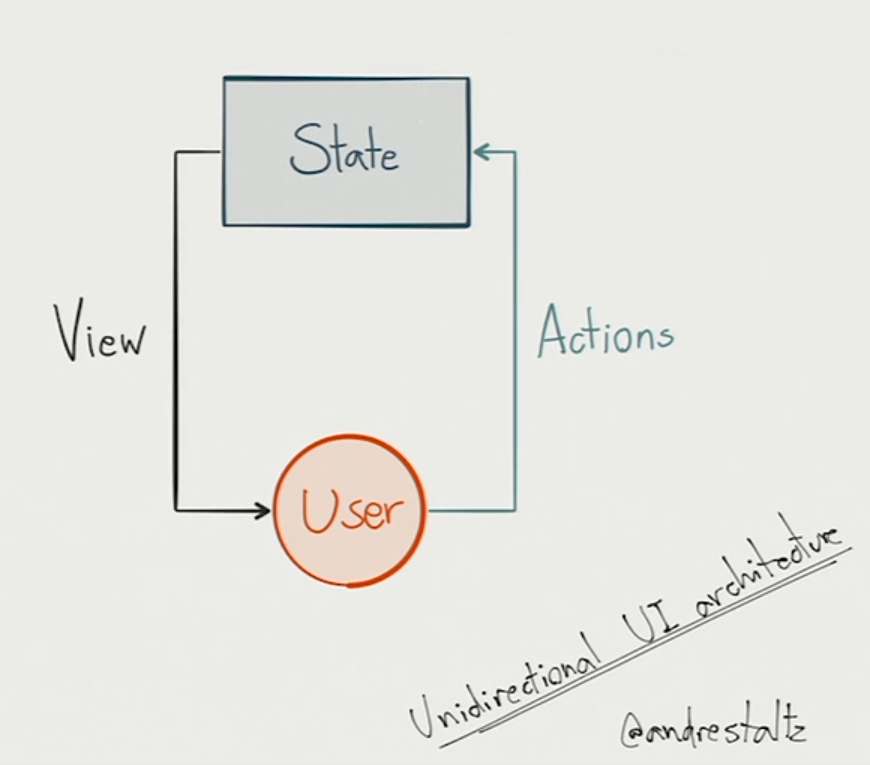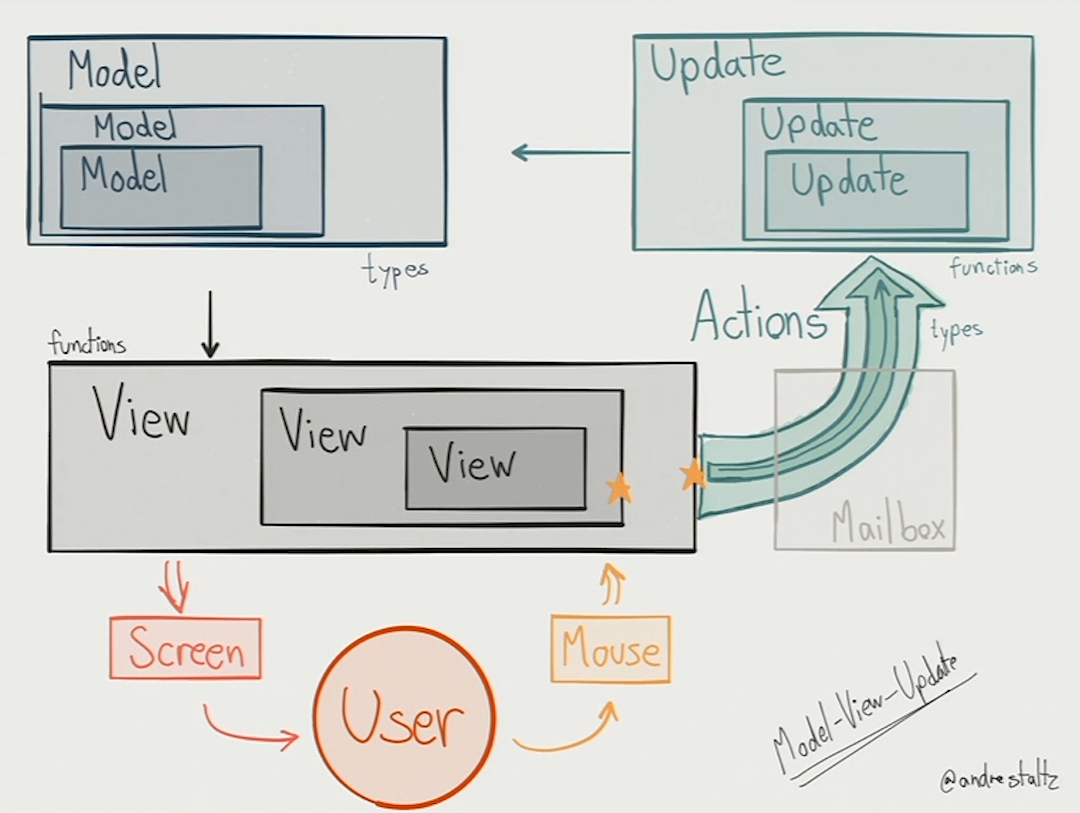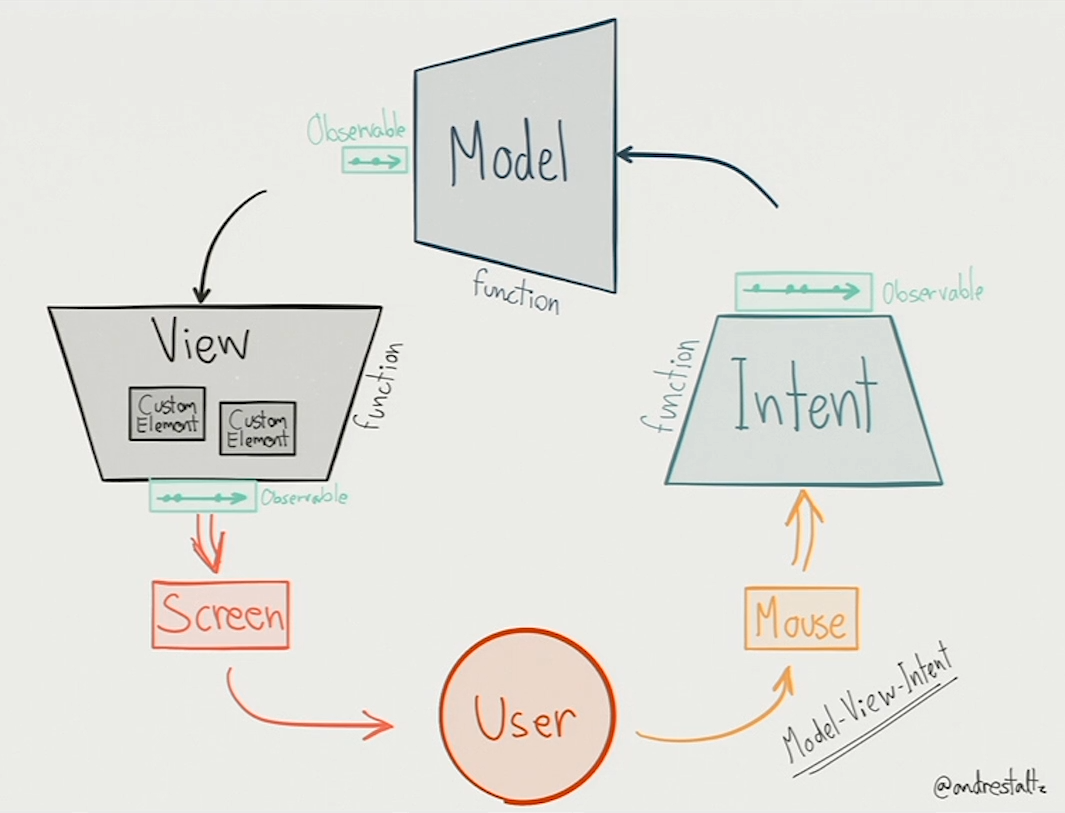Unidirectional Data Flow Architectures
Intro
After watching the excellent talk, I felt the need to summarize it so it can stick to my mind. As the title suggest, the talk focuses on frontned unidirectional data flow architectures as opposed to those relying on model binding (i.e. two-way data flow).
 Two-way databinding
Two-way databinding
 Unidirectional UI Architecture
Unidirectional UI Architecture
Flux
 View is listening for events from the store, sends events/actions to the dispatcher, and the store is listening for events from the dispatcher. In essence, the dispatcher is an event bus.
View is listening for events from the store, sends events/actions to the dispatcher, and the store is listening for events from the dispatcher. In essence, the dispatcher is an event bus.
Pros
- The dispatcher simplifies the events' lifecycle.
Cons
- Concurrency and data sharing between stores.
- Difficult to reuse (not fractal)
Redux
 A variation of flux where now we also have a single store that contains the dispatcher. Reducers are pure functions responsible for managing the state (old state + action => new state). View provider allows redux to be reused with different front end frameworks/libraries (e.g. Angular, React, ...)
A variation of flux where now we also have a single store that contains the dispatcher. Reducers are pure functions responsible for managing the state (old state + action => new state). View provider allows redux to be reused with different front end frameworks/libraries (e.g. Angular, React, ...)
Pros
- Now the store is also a singleton.
- Reducers are easy to test and predictable.
Cons
- Still not fractal
- Not very beginner friendly (middlewares, providers, containers, ... what?)
BEST (Behaviour, Event, State, Tree)
 Direct correlation with MVC => M = State, View = Tree, Controller = Behaviour + Event. State and Tree are declarative (have no logic).
Direct correlation with MVC => M = State, View = Tree, Controller = Behaviour + Event. State and Tree are declarative (have no logic).
Pros
- Simple State and Tree
- Easy to reuse.
Cons
- Can be a bit difficult to keep track of state changes
- Not used much.
Model View Update (ELM)
 Very much like redux because redux was inspired by ELM (so, redux is the copycat here). All components are hirarical and can accomodate several inner layers.
Very much like redux because redux was inspired by ELM (so, redux is the copycat here). All components are hirarical and can accomodate several inner layers.
Pros
- Fractal and simple
Cons
- Lots of wrapping and unwrapping
Model View Intent (CycleJs)
 View has no event handlers. Those are injected by the intent layer. All communications are performed by means of exposing an observable steam which is consumed by the next component.
View has no event handlers. Those are injected by the intent layer. All communications are performed by means of exposing an observable steam which is consumed by the next component.
Pros
- Fractal, generic, and flexible.
- Reactive everywhere (how components communicate)
Cons
- People don't like reactive streams (yet!)
Further reading
- How each handles server communications?